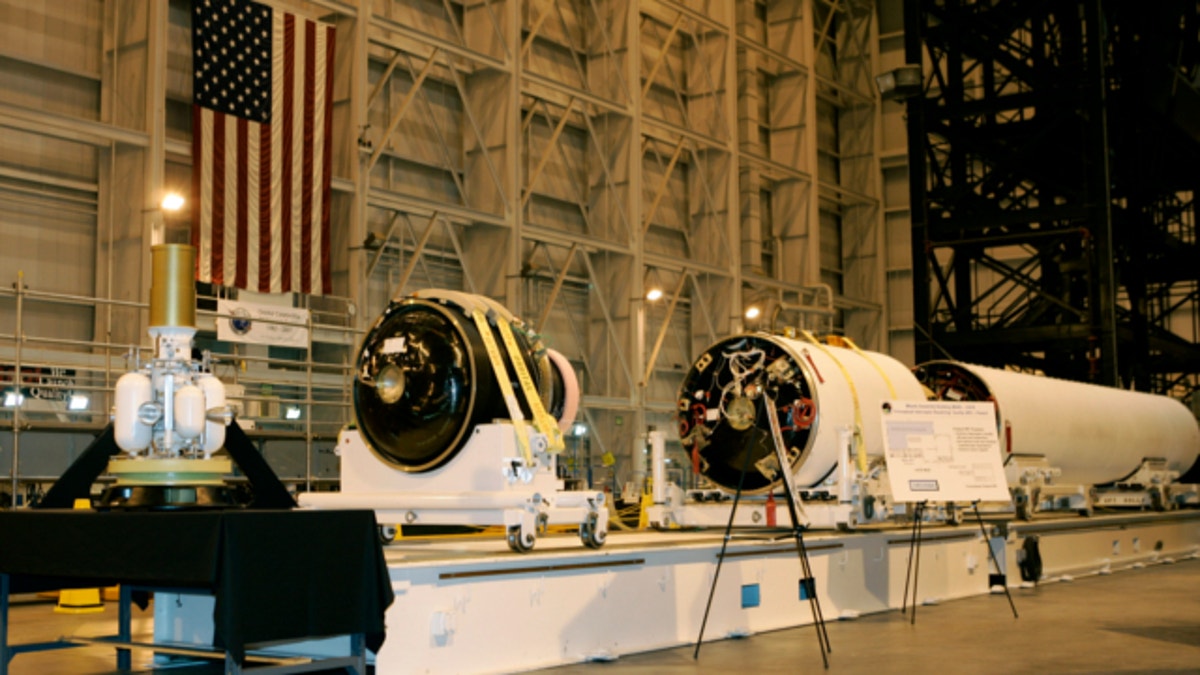
July 17, 2007: The Conceptual Interceptor Receiving Facility (IRF) at the Missile Assembly Building is shown at Vandenberg Air Force Base in California. (AP)
VANDENBERG AIR FORCE BASE, Calif. – An interceptor missile designed to blast nuclear missiles out of the sky failed to hit its target during a test of the weapon at a Southern California coastal base, officials said.
A ground-based interceptor missile was launched from Vandenberg Air Force Base Friday and was supposed to hit its target — a missile launched 4,000 miles away from the Kwajalein Atoll, according to the Missile Defense Agency.
But the interceptor did not hit its target. Officials will try to determine the cause of any anomalies that may have prevented a successful intercept.
"Program officials will conduct an extensive review to determine the cause or causes of any anomalies which may have prevented a successful intercept," the Pentagon said in a statement.
The interceptor is one of about 30 deployed in Alaska and at Vandenberg under a missile defense program begun in 2004. In March, the Pentagon announced it will spend $1 billion to place another 14 interceptors in Alaska. The military said it's responding to North Korean progress on nuclear weapons.
The U.S. currently has 26 interceptors deployed at Fort Greely in Alaska and four at Vandenberg Air Force Base, Reuters reported.
The weapon is a sensor-filled package that uses kinetic energy from a direct hit to destroy the incoming target.
It was the second test at Vandenberg this year for the missile defense program and the first for the system since flight testing was halted after a failed intercept in December 2010 test. The test in January didn't involve a target, but a series of pre-planned maneuvers were executed.
The Associated Press and Reuters contributed to this report.




